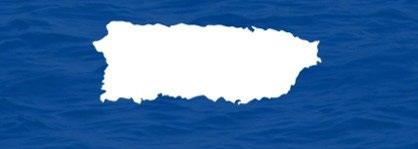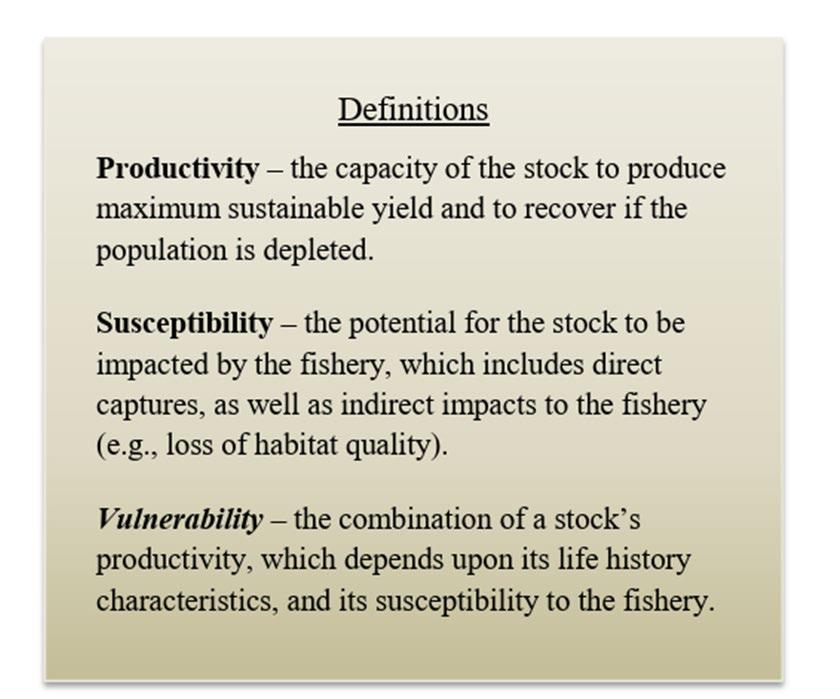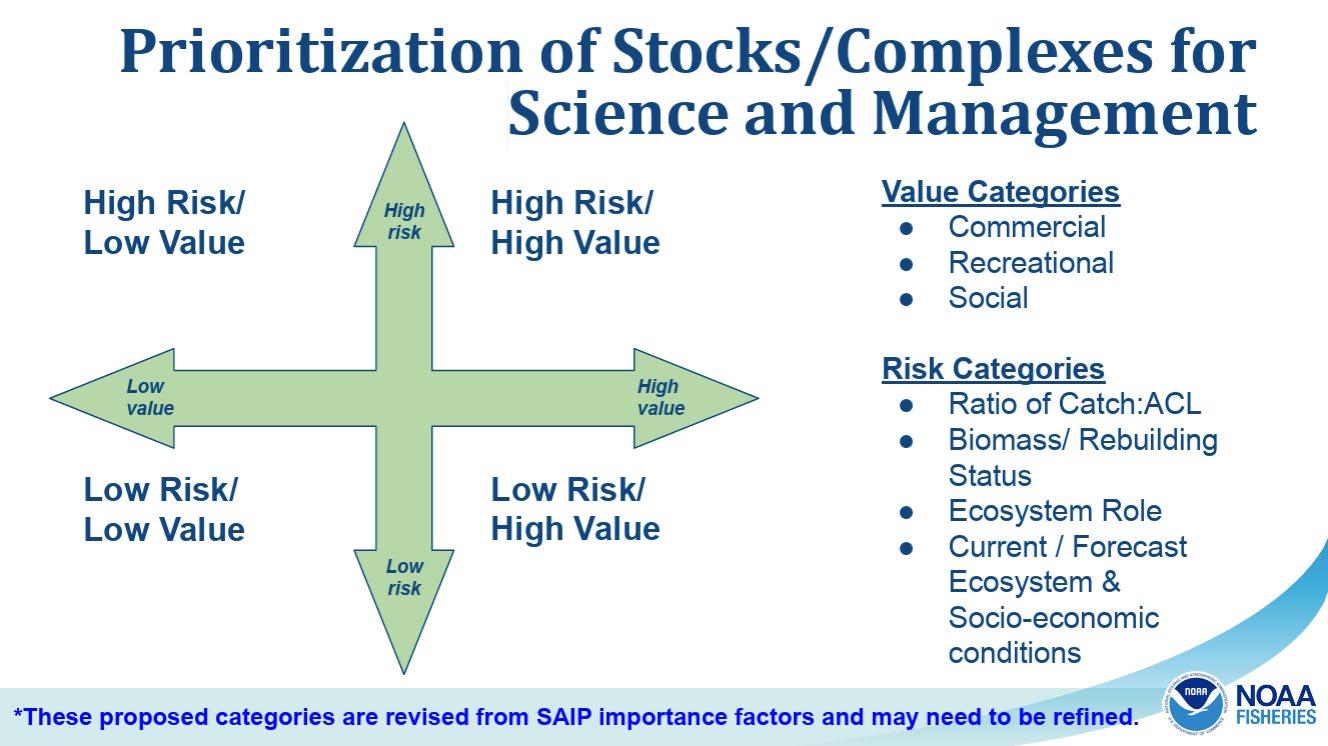Ad Hoc Committee Recommendations on E.O. 14276

187th Caribbean Fishery Management Council Meeting
August 12-13, 2025
Embassy Suites, Carolina, Puerto Rico





187th Caribbean Fishery Management Council Meeting
August 12-13, 2025
Embassy Suites, Carolina, Puerto Rico



(i) The Secretary of Commerce shall request that each Regional Fishery Management Council, within 180 days of the date of this order, provide the Secretary of Commerce with updates to their recommendations submitted pursuant to Executive Order 13921, to reduce burdens on domestic fishing and to increase production. Building upon the earlier goals, identified actions should stabilize markets, improve access, enhance economic profitability, and prevent closures. The Regional Fishery Management Councils will commit to a work plan and a schedule for implementation to ensure these actions are prioritized.


For those species for which landings data are available (Appendix D in each FMP), the Council would follow a stepwise application of a set of criteria to determine if a species should be included for management. The criteria under consideration include, in order:
Criterion A. Include for management those species that are presently classified as overfished in U.S. Caribbean federal waters based on NMFS determination, or for which historically identified harvest is now prohibited due to their ecological importance as habitat (all corals) or habitat engineers (midnight, blue, rainbow parrotfish), or those species for which seasonal closures or size limits apply (Table 2.2.1).
Criterion B. From the remaining species, i.e., those not included via Criterion A, exclude from federal management those species that have been determined to infrequently occur in federal waters based on expert analysis guided by available data (Table 2.2.2).
Criterion C. From the remaining species, i.e., those not included via Criterion A or excluded via Criterion B, include for management those species that are biologically vulnerable, constrained to a specific habitat that renders them particularly vulnerable, or have an essential ecological value, as determined by expert analysis (Table 2.2.3).
Criterion D. From the remaining species, i.e., those not included via Criteria A and C or excluded via Criterion B, include those species possessing economic importance to the national or regional economy based on a threshold of landings or value separately determined for each of the recreational, commercial, and aquarium trade sectors as appropriate (e.g., top 90%) and those representing an important component of bycatch, as established by expert analysis (Table 2.2.4).
Criterion E. From the remaining species, include any other species that the Council determines are in need of conservation and management (Table 2.2.5).



Thomas Based Fishery Management Plan

Puerto Rico Island-Based Fishery Management Plan


Croix Based Fishery Management Plan


• Question 1: Is the list of species under management comprehensive and still valid under the criteria used for selection? (Action 2 Sections 2.2., 2.2.1, See Tables 2.2.6, 2.3.2).
• Question 2: Any specific recommendations?
• Specifically thinking about the EEZ, do these managed species still need management? (Table 5.13.3 of each FMP)
• Any suggested changes? Please think about the rational for your recommendation.
• Question 3: Are they critical to management now or not? Should they be kept or removed from management in the EEZ (e.g., ecosystem component species, managed by the states; Table 2.3.4 )? WHY?


High value/ High risk Reg inplace Means= PR STT/STJ STX
Nassau Grouper ESA No take in EEZ No take No take No take
Goliath Grouper ACL=0 No take in EEZ No take No take No take
Blue parrotfish ACL=0 No take in EEZ
Midnight parrotfish ACL=0 No take in EEZ
Rainbow parrotfish ACL=0 No take in EEZ
Sea cucumbers ACL=0 No take in EEZ No take
Sea urchins
ACL=0 No take in EEZ No take
Corals ESA; ACL=0 No take in EEZ No take No take No take
Status Quo EEZ PR
Giant manta ray ESA; ACL=0 No take in EEZ
Spotted eagle ray ACL=0 No take in EEZ
Southern stingray
ACL=0 No take in EEZ
Ad Hoc
PRDNER
Nassau Grouper queen snapper princess parrotfish Cubera
Goliath Grouper cardinal snapper queen parrotfish queen triggerfish
Blue parrotfish lane snapper redtail parrotfish ocean triggerfish
Midnight parrotfish mutton snapper stoplight parrotfish gray triggerfish
Rainbow parrotfish yellowtail snapper redband parrotfish
Sea cucumbers hogfish striped parrotfish
Sea urchins rainbow runner
Corals dolphinfish
giant manta ray pompano dolphin
spotted eagle ray little tuny
southern stingray blackfin tuna
cero mackerel king mackerel
wahoo
Lobster Queen Conch
Conch dolphinfish coney Blackfin tuna
Mutton snapper hogfish parrotfish King mackerel
Queen snapper lane snapper Little tunny
silk snapper lobster other snappers
red hind yellowtail snapper queen triggerfish
Puerto Rico Why?
cardinal snapper
Bycatch, not abundant
dog snapper State waters; not harveted from EEZ
schoolmaster snapper State waters; not harveted from EEZ
coney grouper Not common in EEZ
graysby grouper Not common in EEZ
rockhind grouper
white grunt
blue tang
Not good for market; not common
Harvested in State waters
No fishery; State waters
ocean surgeonfish No fishery; State waters
doctorfish
hogfish
puddingwife
Spanish hogfish
No fishery; Sate waters
Harvested in State waters
Harvested in State waters
Harvested in State waters
queen angelfish No fishery; ecosystem
gray angelfish No fishery
French angelfish No fishery
great barracuda
Sale prohibited; recreational but released; ciguatoxic
Tripletail Not common; good market
crevalle jack
african pompano
State waters; not harveted from EEZ
Puerto Rico Why?
Proposed Species to be Removed form Federal Management
St. Thomas/St. John Why? St. Croix Why?
black grouper State Waters black grouper black grouper
red grouper State Waters red grouper red grouper tiger grouper State Waters tiger grouper tiger grouper
yellowfin grouper State Waters
Mostly Territorial; Vulnerable when aggregating
yellowmouth grouper State Waters yellowmouth grouper not common; low price
misty grouper
Mostly Territorial; Vulnerable when aggregating
Bycatch to DWS; occasional misty grouper Mostly territorial
yellowedge grouper State Waters yellowedge grouper not common; low price
black snapper
blackfin snapper
silk snapper
vermilion snapper
queen snapper
mutton snapper
yellowtail snapper
coney
red hind
yellowfin grouper
princess parrotfish
queen parrotfish
redtail parrotfish
stoplight parrotfish
redband parrotfish
striped parrotfish
redfin parrotfish
queen triggerfish
hogfish
dolphinfish
wahoo
Lobster
black snapper yellowfin grouper
blackfin snapper white grunt (many released)
silk snapper bluestriped grunt (many released)
vermilion snapper blue tang
queen snapper ocean surgeonfish
lane snapper doctorfish
mutton snapper
schoolmaster
yellowtail snapper
coney grouper
graysby grouper
red hind grouper
rockhind grouper
princess parrotfish
queen parrotfish
redtail parrotfish
stoplight parrotfish
redband parrotfish
striped parrotfish
redfin parrotfish
queen triggerfis
Squirrelfish (longspine)
queen angelfish gray angelfish
French angelfish
dolphinfish
Medium risk/High value Medium risk/High value
Medium risk/Low value
queen snapper
dolphinfish
hogfish
Queen Conch Queen Conch
queen angelfish gray angelfish French angelfish blue runner jack misty grouper
Low risk/Medium value Low risk/Medium value gray snapper lane snapper white grunt (top 10) bluestriped grunt margate grunt blue tang
ocean surgeonfish doctorfish
jolthead porgie saucereye porgie sheepshead porgie sea bream
• Keep some of the protected areas in place, but no more MPAs
• Open Tourmaline to all fishing- no evidence of aggregations or red hind (water column and bottom fishing)
• Hind Bank and Grammanik in place
• Monuments serve as source of recruits for the fishery in the USVI
• ACLs vs seasonal closures: need to be reviewed; overprotection
• Revise the catch reports- focus on the main fisheries such as trap fishery in St. Thomas; Deep-water snappers in Puerto Rico
• Market driven fisheries that need to be assessed as such.
• Need to look at the variability in prices (PR) due to economic changes and imports
Council(s)
Priority Number
Action type (e.g. Changes to Regulations, Orders, Guidance Documents, Other Similar Agency Actions)
Relevant CFR Citation under Title 50 (if applicable)
Updated description of recommended action(s)
Rationale of how the recommended action(s) stabilize markets, improve access, enhance economic profitability, and prevent closures Proposed plan and schedule for implementation
Example - XFMC 1 Regulation
50 CFR 622
This regulation would modify provisions for Fish A vessels transiting through cold weather closed areas with Fish A on board in federal waters. The proposed action would allow trawl doors in the rack (cradle), nets in the rigging and tied down, and trawl net on the deck during transit. Currently, Fish A vessels transiting cold weather closed areas with Fish A on board are required to stow a trawl net with a mesh size of less than 4 inches below deck. Fishermen have requested a change to these transit provisions as vessel design changes have limited access to below deck storage, the need to disassemble the trawl gear prior to stowing nets below deck in rough conditions is a safety at sea concern, and some fishermen have avoided transiting the closed areas entirely.
Because of safety at sea concerns caused by shoals in state waters off State B, federally permitted Fish A vessels from states north of State B that operate off of State B during cold weather closures, but have been unable to store fishing gear according to the current transit regulations, have been forced to land their catch in State B rather than at their homeport. The proposed changes would make it easier for these vessels to comply with the gear stowage requirements and, as a result, more easily return to their homeport with Fish A on board, thus improving access.
Rulemaking requested by X Council at June meeting. Proposed rule anticipated to publish by (timeline if known).
